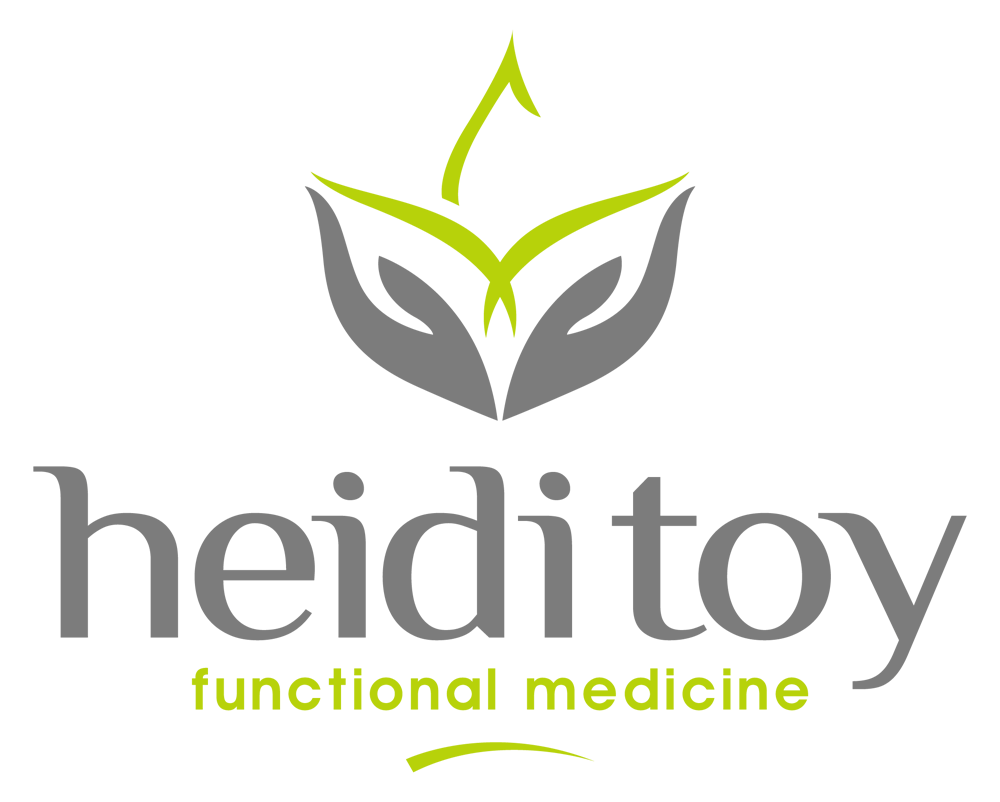Understanding Your Health with a HTMA Test
The Hair Tissue Mineral Analysis (HTMA) is a well known and established diagnostic test in the field of functional medicine, and it provides valuable insights into various metrics that can affect your well-being. In this post, we will delve into the details of how the HTMA test works, what metrics it evaluates, and how variations in these metrics can impact your health. So, let's explore the world of HTMA testing and how it can help you achieve optimal health.
Demystifying Hair Tissue Mineral Analysis (HTMA) Tests
Hair Tissue Mineral Analysis (HTMA) tests are becoming increasingly popular in the field of functional medicine. But what exactly are they, and what can they tell you about your health?
In a nutshell, HTMA tests involve analysing a small sample of hair to evaluate your body's mineral levels and ratios. This can provide valuable insights into potential nutrient deficiencies, toxic metal exposure, and imbalances in your body. The test is non-invasive, cost-effective, and provides a comprehensive snapshot of your overall health.
One of the main benefits of HTMA tests is that they can identify hidden inflammation in the body. Inflammation is a key driver of many chronic health conditions, and by addressing and reducing inflammation, you can support your overall well-being.
HTMA tests can also yield certain information about your microbiome, which is the collection of microorganisms living in and on your body. A healthy microbiome is crucial for good digestion, nutrient absorption, and a strong immune system.
Another important metric that HTMA tests assess is the functioning of your hypothalamic-pituitary-adrenal axis, also known as HPA. This system plays a crucial role in managing stress and regulating hormones in the body. If your HPA axis is dysregulated, it can lead to symptoms such as fatigue, energy crashes, and difficulty coping with stress, for example, adrenal fatigue (HPA-D). By identifying any imbalances in this system through an HTMA test, you can take steps to restore balance and support optimal adrenal function.
Cost is often a concern when it comes to medical tests, but HTMA tests offer great value for the information they provide. Cheaper, however, is certainly not better and just getting your results isn't enough. Interpretation of HTMA findings is a specialized skill and takes time, so paying more for a thorough evaluation could save you years of chasing red herrings. Ultimately, they can help you and your functional medicine practitioner uncover hidden factors that may be contributing to your health issues, allowing for a more targeted and personalized treatment approach.
Delving into the Metrics of HTMA Tests: Each Mineral Examined
Hair Tissue Mineral Analysis (HTMA) tests provide a comprehensive evaluation of various minerals in your body, giving you valuable insights into your overall health and well-being. Let's delve into the metrics examined by HTMA tests and explore the role each mineral plays in the body.
- Calcium: Calcium is essential for maintaining strong bones and teeth, regulating muscle contractions, and supporting nerve function. It also plays a role in blood clotting and hormone secretion.
- Magnesium: Magnesium is involved in over 300 biochemical reactions in the body. It supports energy production, muscle and nerve function and promotes a healthy heart rhythm. Magnesium deficiency is common and can lead to symptoms like muscle cramps, fatigue, and mood changes.
- Sodium and Potassium: These minerals work together to maintain fluid balance, regulate blood pressure, and support nerve function. They play a vital role in proper muscle contractions, including the heart.
- Zinc: Zinc is crucial for immune function, wound healing, and DNA synthesis. It also plays a role in taste and smell perception, as well as supporting reproductive health.
- Copper: Copper is necessary for the formation of red blood cells, connective tissues, and enzymes involved in energy production. It also supports immune function and collagen synthesis.
- Iron: Iron is a key component of hemoglobin, which carries oxygen to the body's tissues. It plays a vital role in energy production, cognitive function, and immune health.
- Manganese: Manganese is important for metabolism, bone formation, and antioxidant function. It also plays a role in the production of collagen and other connective tissues.
- Chromium: Chromium is involved in glucose metabolism, helping to regulate blood sugar levels. It supports insulin action and may enhance the uptake of glucose into cells.
- Selenium: Selenium is an essential antioxidant mineral that supports thyroid function, and immune health, and may help protect against certain types of cancer.
These are just a few of the minerals that can be evaluated through an HTMA test. Each mineral plays a crucial role in maintaining overall health and well-being. By understanding the levels and ratios of these minerals in your body, you can take proactive steps to address any imbalances and support optimal health. HTMA tests provide a comprehensive snapshot of your mineral status, allowing you and your Functional Medicine Practitioner to develop targeted interventions that can promote your overall well-being. So, don't hesitate to explore the world of HTMA testing and discover how it can help you achieve optimal health.
The Implications of Variations in HTMA Test Results on Your Health
When it comes to understanding the implications of variations in HTMA test results on your health, it's essential to consider the impact of abnormal levels of certain minerals. Here are the key implications of variations in the levels of specific minerals found in an HTMA test:
- Calcium: Abnormal levels of calcium can indicate issues with bone health, muscle function, and hormone regulation. Low levels of calcium may contribute to fatigue, muscle cramps, and osteoporosis, whilst high levels can lead to kidney stones and cardiovascular problems.
- Magnesium: Magnesium deficiency is a common issue that can lead to symptoms such as fatigue, muscle cramps, and mood changes. Low magnesium levels can also contribute to cardiovascular issues and compromised immune function.
- Sodium and Potassium: Imbalances in sodium and potassium levels can disrupt fluid balance, leading to issues with blood pressure regulation, muscle contractions, and nerve function. These imbalances can contribute to fatigue, muscle weakness, and even heart problems.
- Zinc: Zinc deficiency can impact immune function, wound healing, and reproductive health. Abnormal zinc levels may contribute to impaired taste and smell, as well as compromised immune response.
- Copper: Abnormal copper levels can affect red blood cell formation, connective tissue health, and immune function. Copper imbalances may lead to fatigue, joint pain, and cognitive issues.
- Iron: Iron is crucial for energy production, cognitive function, and immune health. Both low and high levels of iron can have adverse effects, with low levels leading to fatigue and impaired cognitive function, and high levels contributing to organ damage.
- Manganese: Abnormal manganese levels can impact metabolism, bone health, and antioxidant function. Imbalances in manganese may contribute to cognitive issues, bone abnormalities, and compromised antioxidant defence.
- Chromium: Chromium is involved in glucose metabolism and blood sugar regulation. Abnormal chromium levels can impact insulin function and contribute to blood sugar imbalances, potentially leading to diabetes or other metabolic disorders.
- Selenium: Selenium is an essential antioxidant mineral that supports thyroid function and immune health. Both deficiency and excess levels of selenium can have adverse effects on these functions, compromising overall health.
Understanding the implications of variations in HTMA test results on your health allows you and your functional medicine practitioner to develop targeted interventions to address any imbalances and support optimal health. By addressing these issues, you can improve energy levels, reduce inflammation, and support overall well-being. HTMA tests provide a comprehensive snapshot of your mineral status, allowing for a personalized approach to improving your health.
HTMA Tests and Heavy Metal Toxicity
HTMA tests not only provide insights into mineral imbalances and overall health but also play a crucial role in detecting heavy metal toxicity. Heavy metals such as lead, mercury, cadmium, and arsenic can accumulate in the body over time and have detrimental effects on your health.
Heavy metal toxicity can lead to a wide range of symptoms and health issues. Fatigue, brain fog, and reduced energy levels are common symptoms associated with heavy metal exposure. These toxic metals can disrupt the functioning of your HPA axis, leading to adrenal fatigue (HPA-D) and difficulty coping with stress. They can also disrupt the balance of your microbiome, compromising your digestion and immune system.
Inflammation, both visible and hidden, can be a result of heavy metal toxicity. These toxic metals can trigger an inflammatory response in the body, leading to chronic inflammation and contributing to the development of various chronic health conditions. By identifying heavy metal toxicity through an HTMA test, you can take steps to reduce your exposure, support your body's natural detoxification processes, and address the underlying causes of hidden inflammation.
Functional medicine practitioners recognize the importance of addressing heavy metal toxicity in order to achieve optimal health. HTMA tests provide a comprehensive snapshot of your mineral status, allowing practitioners to identify heavy metal toxicity and develop personalized strategies to reduce exposure and support detoxification. This can involve dietary changes, targeted supplementation, and lifestyle modifications to minimize the long-term health consequences of heavy metal toxicity.
So, if you're experiencing unexplained symptoms, or fatigue, or are concerned about heavy metal exposure, it may be time to consider an HTMA test. By detecting heavy metal toxicity and addressing it with a targeted approach, you can take control of your health and well-being. Consult with your Functional Medicine Practitioner today to discuss the benefits of an HTMA test and how it can support your journey toward optimal health.
Why you should ask your Functional Medicine Practitioner for a HTMA Test Today!
In summary, if you're looking to gain a deeper understanding of your health and address underlying causes of your health issues, then it's time to consider getting a Hair Tissue Mineral Analysis (HTMA) test. There are several reasons why you should ask your Functional Medicine Practitioner for an HTMA test today!
Compared to other medical tests, HTMA tests provide a comprehensive analysis of your body's mineral levels, toxic metal exposure, and adrenal gland function. This allows for a more targeted and personalized treatment approach, saving you time and money in the long run. Investing in an HTMA test is investing in your health and well-being.
The information provided by an HTMA test can be invaluable in identifying hidden factors that may be contributing to your health issues. It can reveal nutrient deficiencies and adrenal imbalances that may be impacting your overall health. By uncovering these factors, you and your Functional Medicine Practitioner can develop a tailored plan to address them and support your optimal health.
By taking an HTMA test, you are taking a proactive approach to your health. It allows you to identify potential health issues before they become more serious and helps you take steps toward preventing long-term health consequences.
All in all, a HTMA test is a valuable tool in functional medicine for assessing your overall health. The comprehensive insights it provides make it an essential part of your journey towards optimal health. So don't hesitate to ask your Functional Medicine Practitioner for an HTMA test today and take control of your well-being. Remember, knowledge is power, and the HTMA test can provide you with the knowledge you need to support your health.
Keep reading on www.heiditoyfunctionalmedicine.com for more informative articles on functional medicine and health optimization.
Don't Miss Out!

Heidi Toy Functional Medicine Blog

























































































